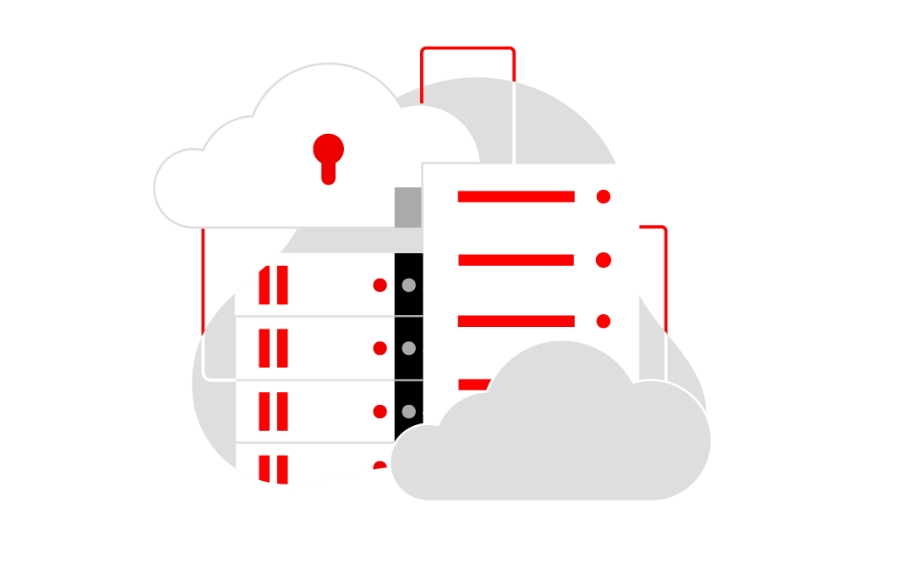Overview
Cloud governance is the process of defining, implementing, and monitoring a framework of policies that guides an organization’s cloud operations. This process regulates how users work in cloud environments to facilitate consistent performance of cloud services and systems.
A cloud governance framework is commonly built from existing IT practices, but in some instances, organizations choose to develop a new set of rules and policies specifically for the cloud. Implementing and monitoring this framework allows organizations to improve oversight and control over vital areas of cloud operations—such as data management, data security, risk management, legal procedures, cost management, and much more—and makes sure that they are all working together to meet business goals.
Why is cloud governance important?
As organizations opt for the flexibility and scalability of cloud and hybrid cloud operating models, their IT teams must also manage the new complexity that comes with decentralized cloud environments. Cloud computing can alleviate infrastructure and resource limitations, but with users spanning multiple business units, it can be difficult to ensure cost-effective use of cloud resources, minimize security issues, and enforce established policies.
Building a cloud governance framework with strict processes for enforcement and monitoring can help keep the many moving parts of cloud environments aligned and working efficiently. A comprehensive cloud governance strategy can help organizations:
- Improve business continuity. With better visibility across all business units, organizations can develop clearer action plans in the case of data breaches or downtime.
- Optimize resources and infrastructure. Increasing monitoring and control over cloud resources and infrastructure can inform efforts to use resources effectively and keep cloud costs low.
- Maximize performance. With a clearer view of their entire cloud environment, organizations can improve operational efficiency by eliminating productivity bottlenecks and simplifying management processes.
- Increase compliance with policies and standards. Stringent compliance monitoring helps organizations follow applicable government regulations and standards, as well as their own internal governance policies.
- Minimize security risks. A good governance model includes clear identity and access management strategy and security monitoring processes, so that IT teams are better positioned to identify and mitigate vulnerabilities and improve cloud security.
Despite these benefits, it can take a lot of time and effort to develop, implement, and maintain governance processes across a distributed cloud architecture—especially for larger companies—so automation has become a necessary element of cloud governance strategies.
Learn how to automate all aspects of your hybrid cloud
How can automation help with cloud governance?
As cloud environments can quickly scale well beyond manual control capabilities, automation makes efficient cloud governance possible. Many solutions exist for automating specific processes—like infrastructure provisioning, cloud security, compliance, network management, workload management, or application development—but managing these components separately can be complicated and result in costly inconsistencies and redundancies.
A unified automation platform that ties these elements together can help IT teams implement a holistic governance approach across their cloud environment. With all cloud management united under a single set of processes and policies, IT teams can more consistently monitor and control every aspect of cloud usage and strategy. Automation allows organizations to:
- More accurately understand cloud usage to better plan investments and budget.
- Schedule workflows to continually audit clouds and gain visibility into current infrastructure and usage, so that automation can be created to improve it.
- Automate the execution of governance policies, enforcement actions, and resource allocation across clouds.
- Create, manage, and enforce backup policies to secure business operations.
As the capabilities of automation solutions can vary, choosing the right platform is essential for any organization trying to implement a cloud governance framework for their hybrid cloud.
Why choose Red Hat Ansible Automation Platform for cloud governance?
Red Hat® Ansible® Automation Platform is Red Hat’s automation solution for cloud architects, operators, and cloud centers of excellence that are responsible for overseeing the adoption and operation of cloud services. Ansible Automation Platform streamlines and operationalizes cloud configuration and management across multiple platforms and services, and it provides a common framework—using Red Hat Ansible Certified Content—to support automation.
Ansible Automation Platform enables use cases that span:
- Public clouds. Automate IT infrastructure and configuration across many cloud service providers, including Amazon Web Services (AWS), Microsoft Azure, Google Cloud, and more.
- Private clouds. Automate physical and virtual infrastructure and connect on-premise environments and workloads to cloud infrastructure and cloud-native services.
- Cloud-native technologies. Add Red Hat OpenShift® to automate deployment and management of containerized applications across an entire cloud environment.
Users of Ansible Automation Platform can automate their governance policies to set up common experiences across all clouds, schedule enforcements across geographic and virtual locations, turn off or reallocate unused resources, move and copy resources from clouds, and more. With Ansible Automation Platform, organizations can better manage key areas of their hybrid cloud environment, including:
- Infrastructure optimization. Provision infrastructure across multiple clouds using a consistent framework and interface—including server instances, networking, load balancing, storage, and databases—and coordinate infrastructure to ensure all instances are properly configured.
- Business continuity. Create a strong business continuity plan—including disaster recovery and incident response—by automating the provisioning of infrastructure to be used in the case of an outage. Automate the response to cybersecurity threats to ensure minimal downtime.
- Compliance. Improve identity and access management by using role-based access controls to assign permissions, privileges, and roles. Use Ansible Automation Platform’s tools for encryption, audit trails, and inventory controls to ensure compliance with any relevant standards.



